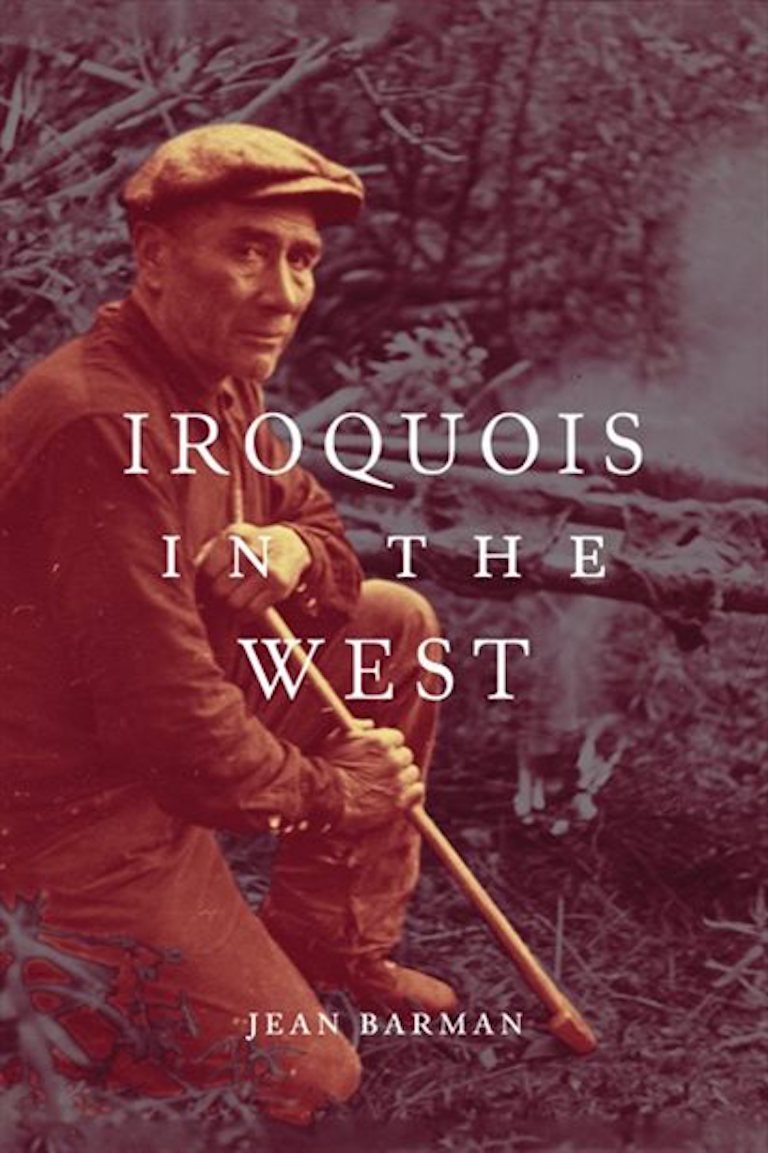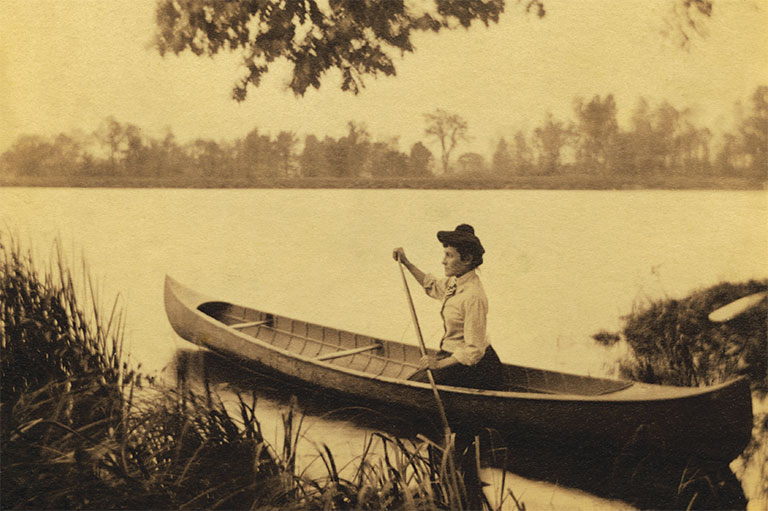Iroquois in the West

Iroquois in the West
by Jean Barman
McGill-Queen's University Press,
314 pages, $29.95
When I was growing up, the only time I learned about the history of the fur trade in school was in grade five. At that time, as I remember it, the story that was told was very superficial and largely centred around the epic legends of the Iroquois as concurrently partners and enemies to “the enterprise that built a nation.”
I always wondered about those brave men who left their families and paddled for months into the wilderness, or how their families managed when their husbands and fathers were absent for sometimes as long as a decade.
Jean Barman’s meticulously researched narrative about the Iroquois provides a satisfying account of their emergence as a sought-after partner in advancing the fur trade westward, while the second part of her book follows four “clusters” of Iroquois whose members chose to stay in different parts of the North American West as the industry went into decline.
In the first part of Iroquois in the West, we learn that nearly six hundred named Iroquois from three communities around Montreal — Kahnawake, Kanesatake, and Akwesasne — appear in contract ledgers, where they represent an unknowable number of the first generation of paddlers who contracted with the North West Company during the period from 1800 to 1821.
Before then, the Iroquois from these three communities had already carved a special place for themselves between the white traders and other Indigenous peoples — because they were raised with Jesuit teachings and they were literate in their own language while becoming fluent in French. Moreover, they were skilled beaver trappers, fast paddlers, and resourceful businessmen.
The Iroquois were so good that they were often paid on par with the white Canadiens, and many saw their contracts automatically renewed as they went from one term to the next. As a result, they were able to establish steady incomes that could flow directly to their families back home, and some even built up significant credits with the NWC.
On the other hand, this special status sometimes worked against them — particularly while they were out west, where, Barman notes, “they did not belong from the perspectives of many of the men in charge and also of local Indigenous peoples.”
Regarding the Iroquois who stayed in the West, it is likely that many continued to work in the trade as independents or free agents following the merger of the Hudson’s Bay Company and the NWC, or they settled in with other Indigenous communities — meaning that official records of their Iroquois identity disappeared as they integrated and intermarried into new communities.
The book offers four narratives that are drawn from meticulously scoured sources and show the range of ways these Iroquois were both culturally and economically resilient.
The first cluster of Iroquois is traced through Jesuit records as a group of independent traders, not named in HBC records, who travelled to present-day Montana and were determined to bring a Jesuit missionary to the Flatheads, a Salish community they encountered.
A second cluster includes a group of Iroquois trappers who worked with the NWC as they pressed onward into the Pacific Northwest. Barman writes: “It soon became clear to the Iroquois that their hard work and large numbers of pelts did not equate with economic success.”
Disputes between Iroquois and the HBC continued after the merger of the trading companies. Through HBC journals regarding these expeditions, Barman is able to chronicle the sequence of events that led to the departure of some Iroquois in 1825 and their return as part of the rival American Fur Company a year later — something that would effectively “upend” the fur-trading monopoly.
Remaining chapters focus on Iroquois who remained in the fur trade in places as far-flung as what are now Montana, Oregon, British Columbia, and Alberta. These Iroquois eventually disappeared as the fur trade era ended and they integrated with other local Indigenous communities in the United States and Canada.
One group, the Jasper Iroquois, settled around the fur-trading post of Jasper House in what is now Alberta. Beginning with a first wave of contractors in the early 1800s, they befriended local Indigenous peoples who were hunting and fishing in the area.
They married local women, raised families, and built a community that endured but was largely unknown to outsiders for over a century — before their “place of being” was expropriated in 1910 to make way for Jasper National Park. Their Iroquois identity was proudly reinforced from generation to generation, even though the men and their descendants no longer had direct ties to their original homeland.
How that identity has endured, as well as the determination of a people to maintain its values and independence despite considerable forces against its success, is a remarkable story that challenges our thinking about how we form and maintain our cultural identities.
Themes associated with this article
Advertisement




